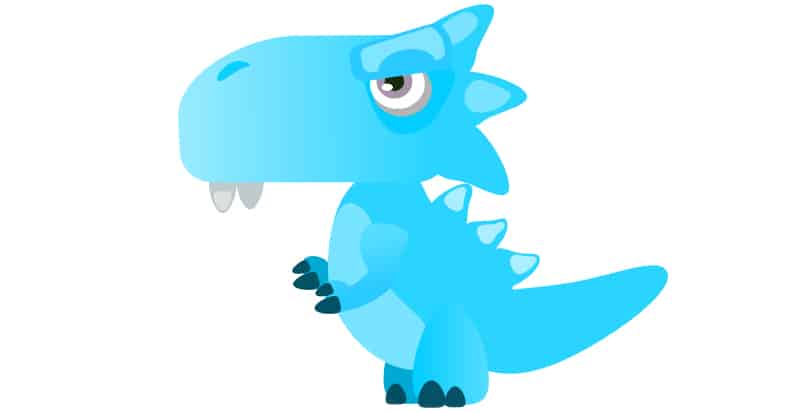
Just as the dentists at Toothology Dental can tell a lot about you and your habits from your teeth, vertebrate paleontologists learn a lot about dinosaurs from their teeth. Read on for 7 fascinating facts about dinosaur teeth!
- Dinosaurs grew new teeth.
- Some dinosaurs did not have teeth.
- Tyrannosaurus Rex teeth were the longest.
- The T. Rex was not above eating its own kind.
- Hadrosaurs had the most teeth.
- Although the Apatosaurus had teeth, it could not chew.
- Some dinosaurs are only known from their teeth.
Scientists have found that dinosaurs grew replacement teeth, an approach that’s much more “quantity over quality” than how human teeth are.
“Dino Don” Lassem, author of The Ultimate Dinopedia, explains that there were also toothless dinosaurs. The orthomimids (literally Greek for “bird mimics”) are believed to have fed on vegetation, insects, small lizards, and small mammals, using their gums to grind their food into digestible bits.
The longest dinosaur tooth ever recorded belonged to a T. Rex, and they were a whopping 12 inches long! This measurement includes the tooth’s root though, so the exposed part of the tooth was 6 inches long.
Tyrannosaurus Rex bones have been found with T. Rex tooth gouges, suggesting it may have been a cannibal.
Known as the duck-billed dinosaur, hadrosaurs had beaks and up to 1,000 cheek teeth that were used to break down tough vegetation.
The Apatosaurus, a large herbivore related to the Brontosaurus, had chisel-like teeth, but likely swallowed plants whole, without chewing.
Since dinosaur teeth are harder than bone, they fossilized more readily. The Trachodon, Deinodon, and Cardiodon dinosaurs only have teeth in the fossil record.
Are you still curious about dinosaur teeth? Check out this video from the Smithsonian’s National Museum of Natural History. And don’t forget to bring your dinosaur-loving, paleontologist-aspiring kids to our friendly team of Toothologists! We’d love to help them maintain strong, healthy teeth and a bright, happy smile.
